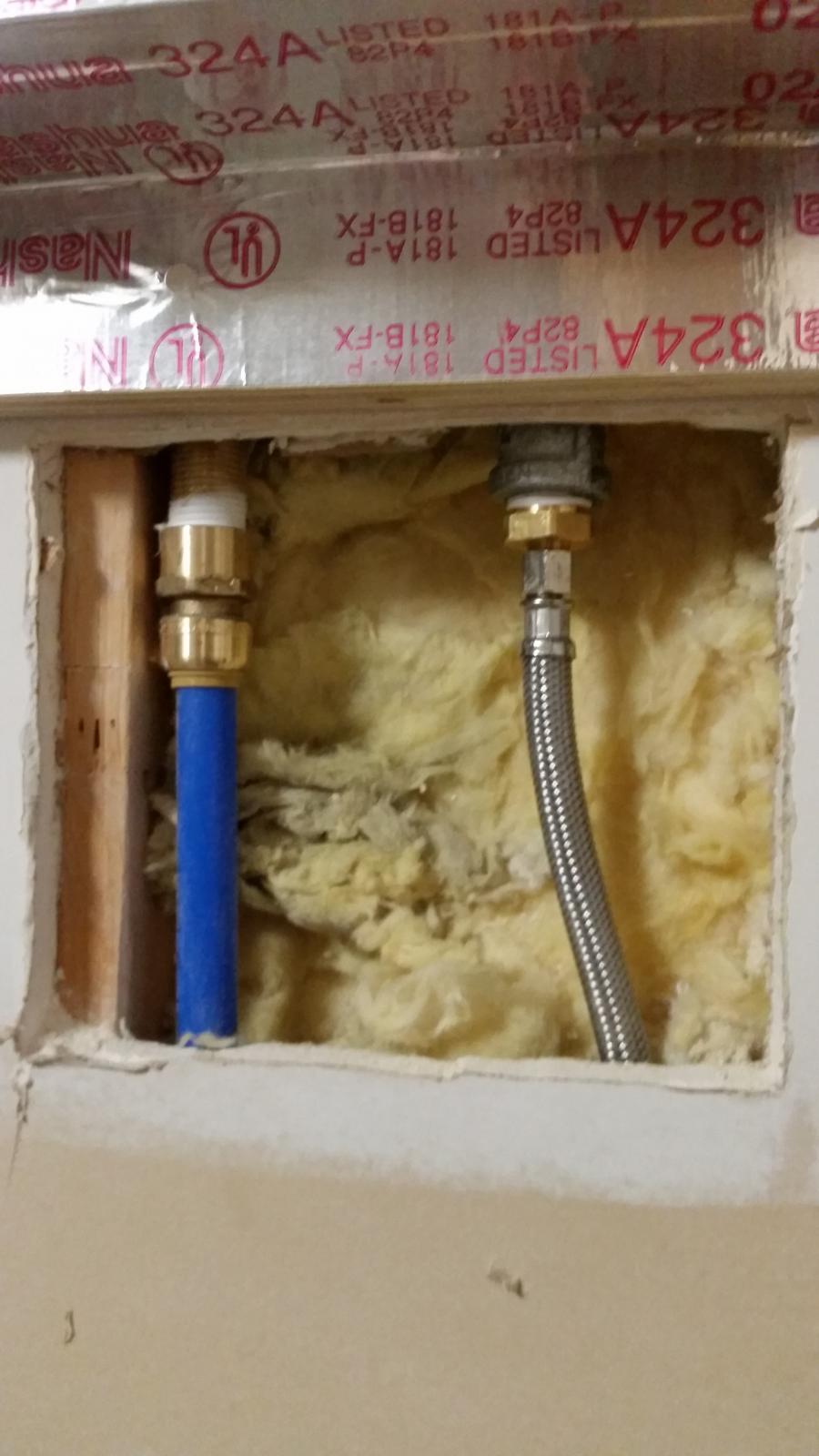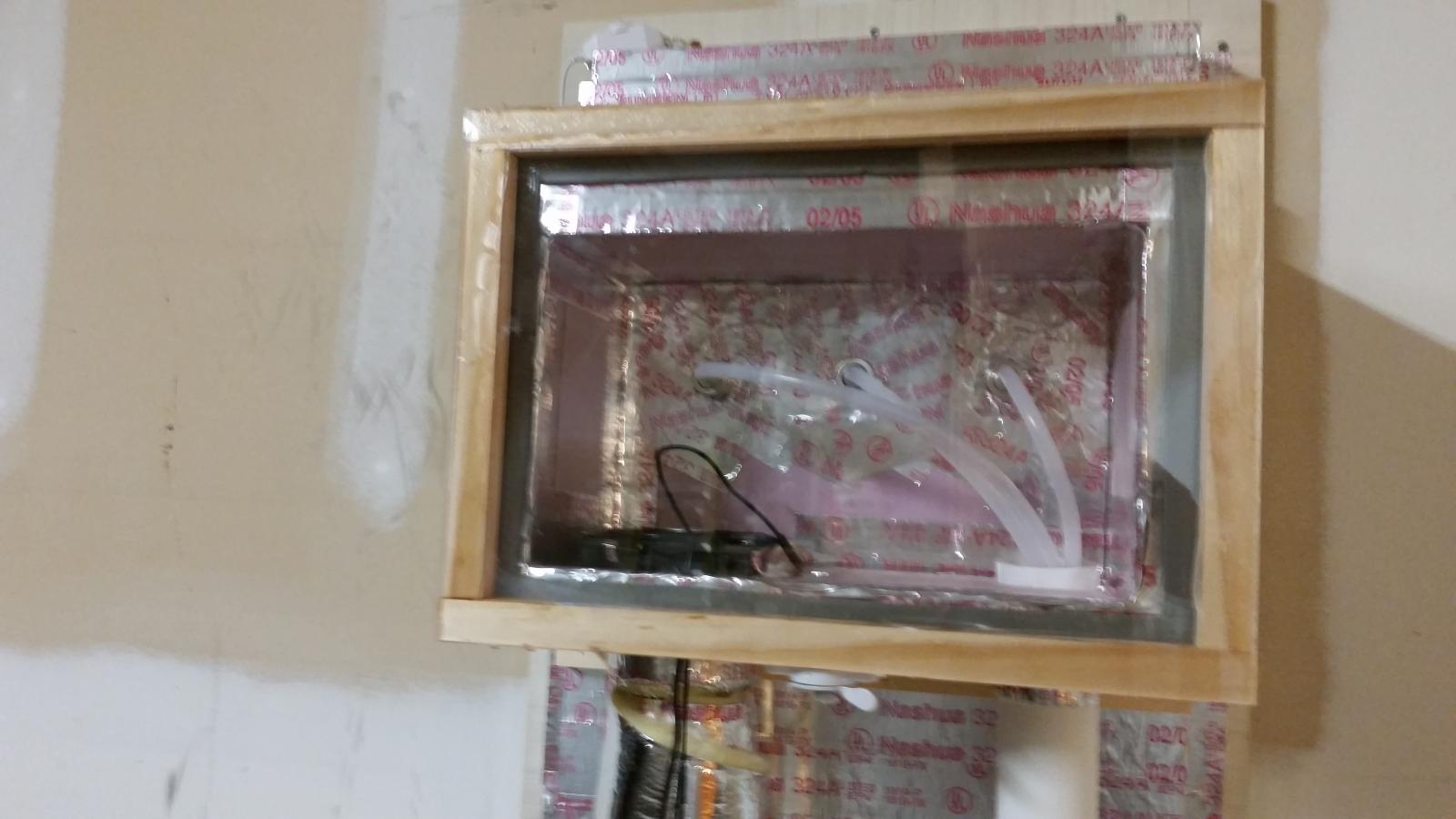So my wife and I were house hunting in the Charlotte area and this one particular house has a small area between the kitchen and the dining room that I think was intended originally for some sort of wet bar or something. Right now, all that was in there is some small cabinets, one drawer, and some counterspace. The wall opposite of this is the same wall as the garage. I thought it would be perfect to have a keezer there in the corner of the garage and put a few taps in the wall. I started researching this and found a few things here and there, but not as much as I would have hoped. So I thought I would write this up in case anyone else is interested and needs ideas. I will have to say, the biggest influence I got was from Martianpc (https://www.homebrewtalk.com/showthread.php?t=421282). By influence I mean I pretty much just copied everything he did. So while I may have made some small tweaks, Martianpc is the mastermind behind all of this.
I wanted at least three taps and I wanted to have a glass rinser so I can legitimize my baller-ness. The size of my opening had to be based on the drip tray I went with. It was difficult to find a drip tray that would work for my application. One important thing that influenced my build was that the wife didn't want the taps out in the open. In order to get authorization to actually do this whole thing, I had to agree to this. So this meant the taps had to not protrude from the wall. The opening or tap enclosure would be hidden using a picture frame on hinges. One thing this also did was limit the size based on the size of the picture and the width of the frame itself. I found a few drip tray enclosures that had stainless steel backing but nothing that was quite right. I then decided to go with this one:
http://absone.com/en/drip-trays-rin...drip-tray-with-center-rinser-7-x-78-x-16.html
In order to get the interior stainless I looked into getting something fabricated. However, it was several hundred dollars. I considered using the aluminum flashing material from home depot as it would result in that clean metallic look but I then stumbled upon this site:
https://www.stainlesssupply.com/ord...0/Custom-C-Channel-304-Stainless-4-Finish.htm
I went with the #4 finish and it looks great. Similar to the finish on my stainless steel refrigerator. For the thickness, I went with 26G (0.0178"). I could probably have gone one more size down and still been ok. Every bit of the stainless will have wooden backing so it really is not structural at all. Since I had to recess it, I had to get the backing material in a 'C' shape. The above site makes custom c-channel shapes in about any dimension you need. So once I got my drip tray, I could build my wooden box enclosure and take measurements to order the stainless c-channel shape. I just had to drill three holes in the stainless steel c-channel once I got everything ready.


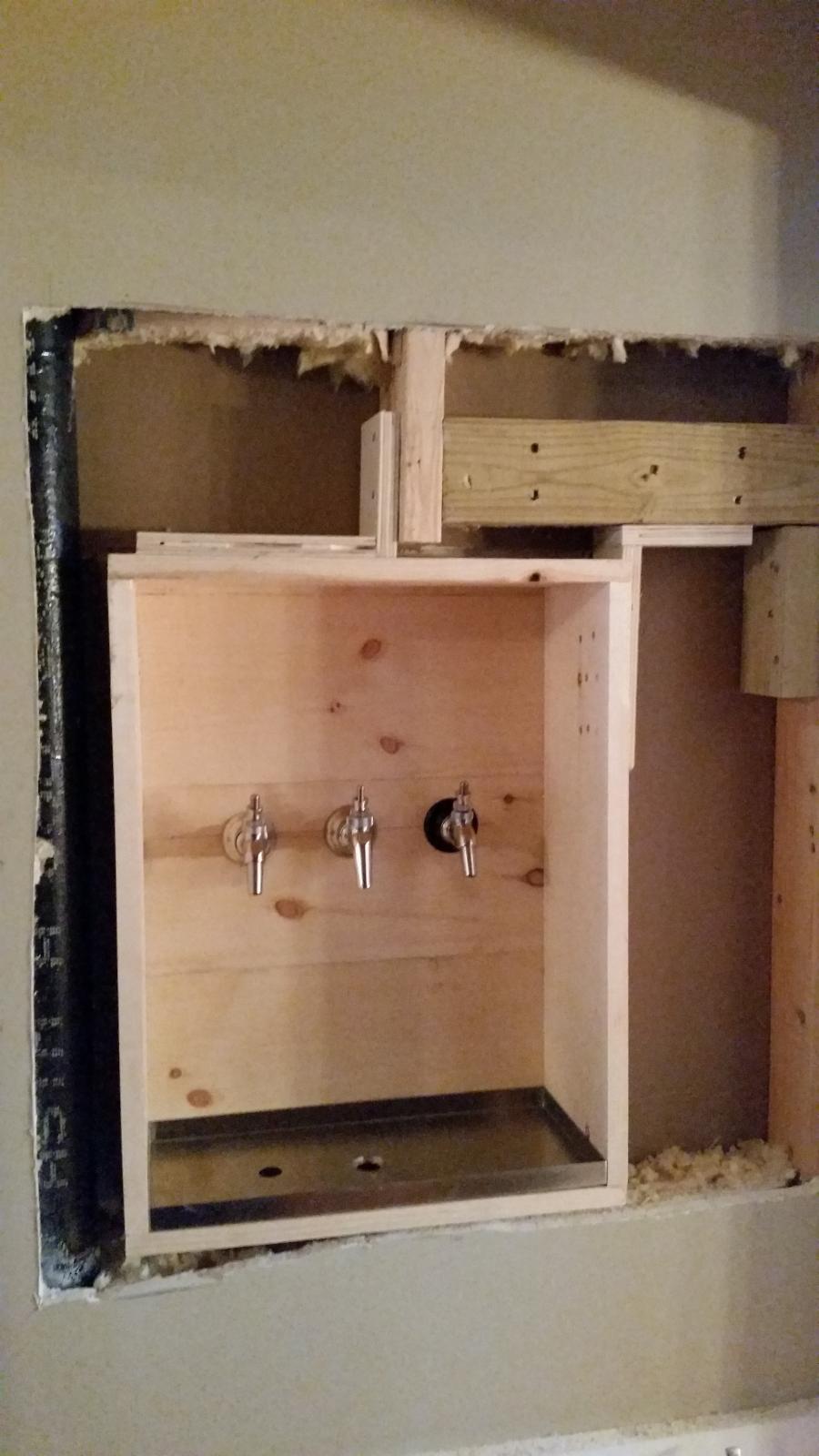
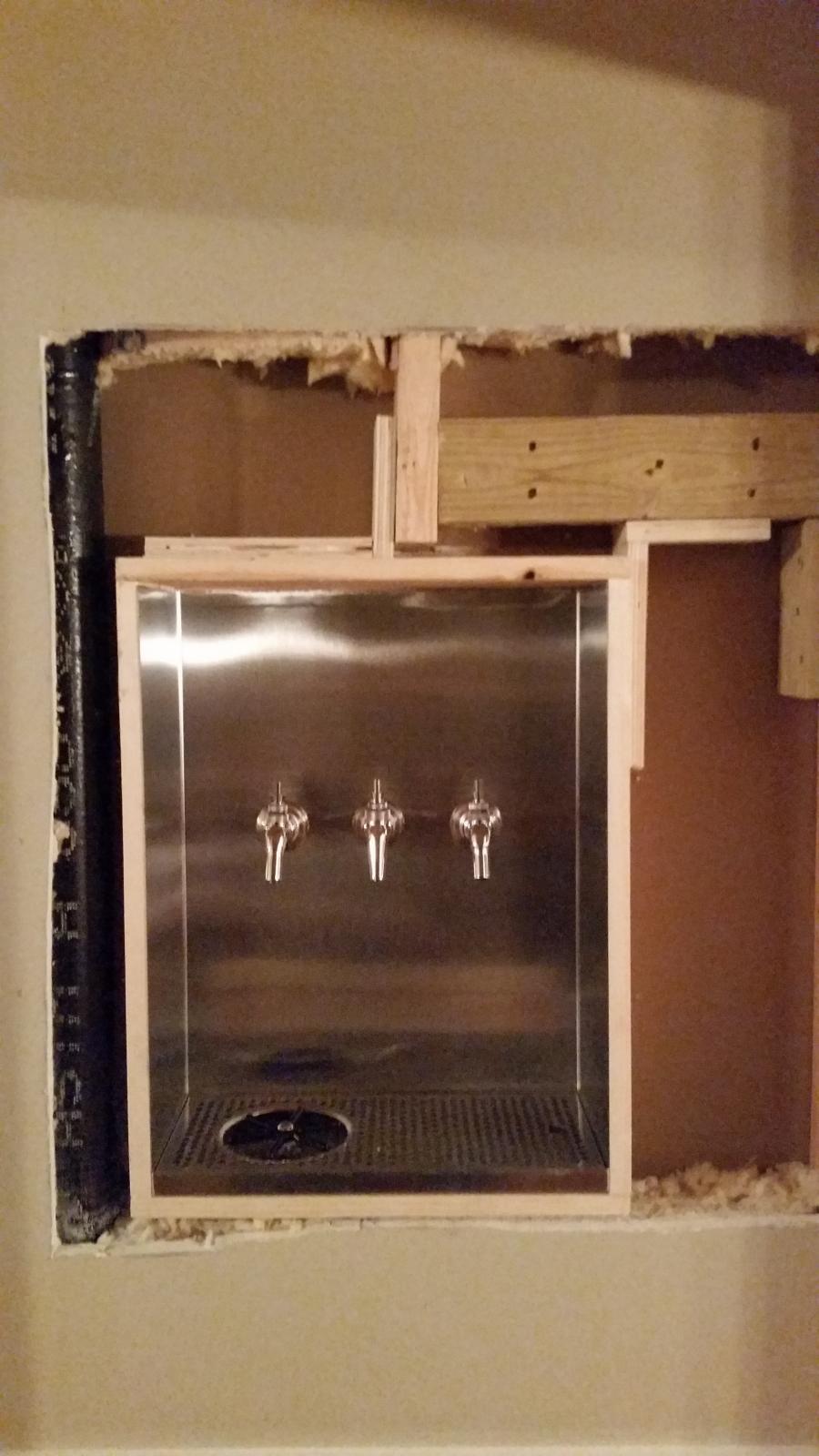


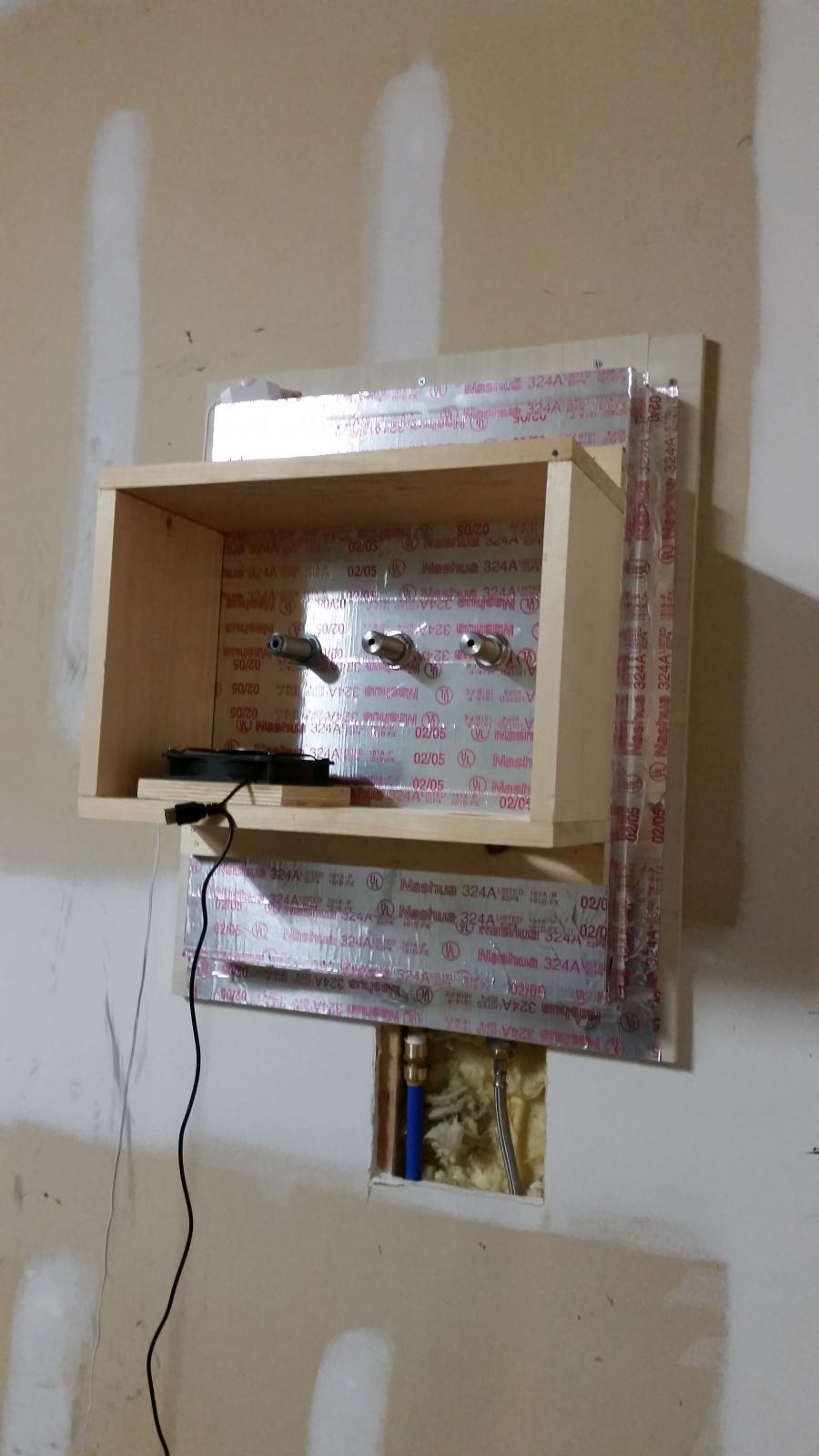
I wanted at least three taps and I wanted to have a glass rinser so I can legitimize my baller-ness. The size of my opening had to be based on the drip tray I went with. It was difficult to find a drip tray that would work for my application. One important thing that influenced my build was that the wife didn't want the taps out in the open. In order to get authorization to actually do this whole thing, I had to agree to this. So this meant the taps had to not protrude from the wall. The opening or tap enclosure would be hidden using a picture frame on hinges. One thing this also did was limit the size based on the size of the picture and the width of the frame itself. I found a few drip tray enclosures that had stainless steel backing but nothing that was quite right. I then decided to go with this one:
http://absone.com/en/drip-trays-rin...drip-tray-with-center-rinser-7-x-78-x-16.html
In order to get the interior stainless I looked into getting something fabricated. However, it was several hundred dollars. I considered using the aluminum flashing material from home depot as it would result in that clean metallic look but I then stumbled upon this site:
https://www.stainlesssupply.com/ord...0/Custom-C-Channel-304-Stainless-4-Finish.htm
I went with the #4 finish and it looks great. Similar to the finish on my stainless steel refrigerator. For the thickness, I went with 26G (0.0178"). I could probably have gone one more size down and still been ok. Every bit of the stainless will have wooden backing so it really is not structural at all. Since I had to recess it, I had to get the backing material in a 'C' shape. The above site makes custom c-channel shapes in about any dimension you need. So once I got my drip tray, I could build my wooden box enclosure and take measurements to order the stainless c-channel shape. I just had to drill three holes in the stainless steel c-channel once I got everything ready.









